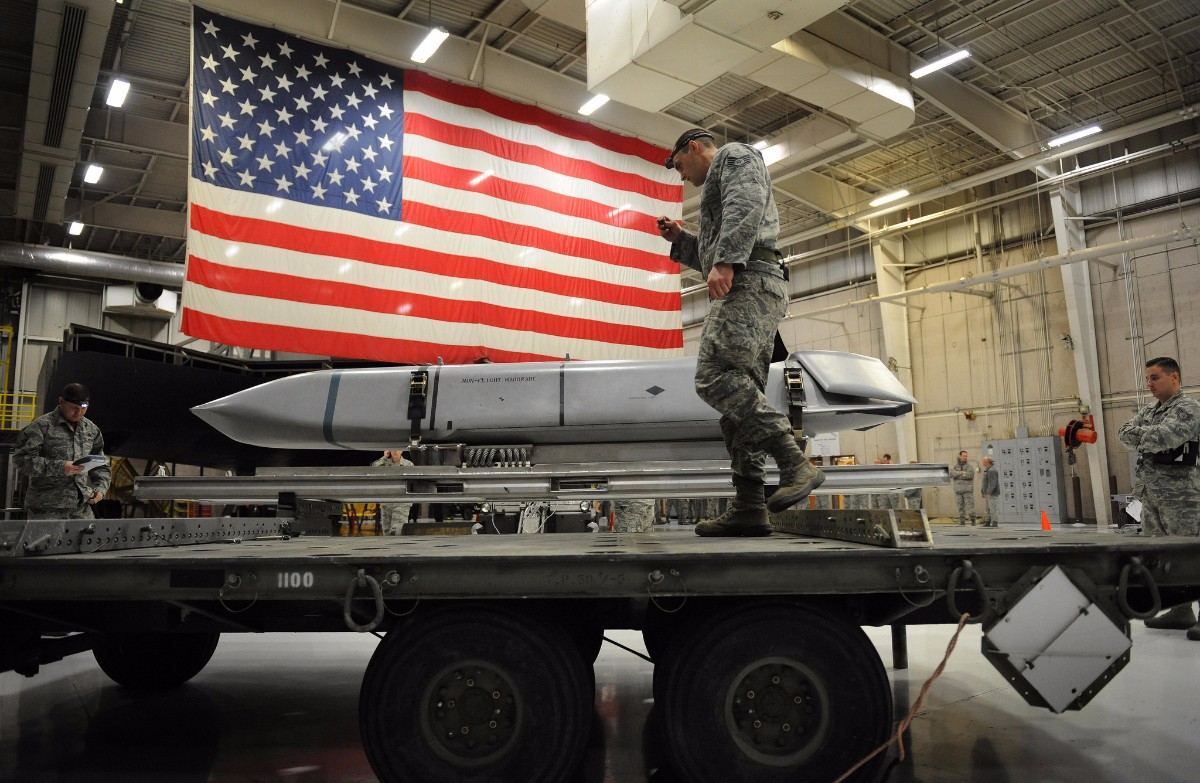 US Air Force / flickr
US Air Force / flickr
Deterring US Adversaries with Fewer Nuclear Weapons
At the peak of the Cold War, the US relied on the deterrence of Mutually Assured Destruction (MAD) with 12,000 nuclear warheads. With the New START Treaty limiting the US to no more than 1,550 deployed strategic nuclear warheads, civilian and military leaders are severely limited in developing appropriate responses to certain types of threats. To ensure the security of the country and its allies, the US must choose between one or a combination of deterrent strategies.
Different Threats, Different Strategies
The current strategic environment requires the US to be able to target Russia, China, North Korea, Iran, and any state that sponsors a terrorist WMD attack. The composition and capability of threats that the US has to confront makes the theory of MAD a less suitable deterrent strategy. While some targets have few (China and North Korea) to no (Iran) nuclear weapons, the US should adopt a flexible response that could incorporate all three deterrent strategies. For those states that do have nuclear weapons and are capable of causing immense damage, having fewer weapons makes deterrence more difficult, especially if the US were to adopt a “no-first use” or “no-launch-on-warning” options.
With Russia being the country’s closest peer competitor, the US must be wary of its destructive capabilities. Since the Russians have a nuclear arsenal similar in composition and size, the doctrine of MAD may still be relevant. Given Russia’s capability of inflicting massive damage against the United States, neither the country’s allies nor the American people would be satisfied with a retaliation/countervalue strategy, nor would they accept a counterforce strategy that leaves room for a retaliation. With the likelihood of a successful first strike being low and the risk-adverse nature of the US to suffer city damage, a preferred strategy would be to adopt Limited Nuclear Options (LNOs). In the event of a full scale invasion of NATO member countries, Russia’s short-term conventional advantage and the slow mobilization time for NATO members could warrant discussion of an escalatory move of limited counterforce strikes that would threaten an escalation to MAD.
Even though China has approximately 260 deployed warheads, its possession of a nuclear triad and its most recent modernization efforts for all three legs causes concern for the US’ East Asian allies. With China’s limited numbers and its “no-first-use” policy, the US can pursue a damage-limitation strategy. This requires the US to know and possess several capabilities and systems:
1) A missile defense system that is capable of targeting ballistic missiles during different flight stages.
2) The ability to find and track mobile missiles.
3) An accurate estimate of damage limitation thresholds that the US and its allies can endure.
Denying China’s second strike capability would prevent it from inflicting damage onto the US and its allies, but given the placement of missile defense systems in Japan and the United States, this strategy is inherently destabilizing and financially costly for the US.
North Korea’s stance on nuclear weapons requires a counterforce strategy similar to President Carter’s countervailing strategy. The development of the bomb appears to be geared towards satisfying the political interests of the Kim family. Their nuclear program has been primarily oriented towards boosting domestic support for the regime, extracting concessions from the United States, and providing deterrence against a conventional invasion of the North. The normative value that North Korea places on possessing nuclear weapons makes counterforce strategy suitable because they sustain the legitimacy of the regime. But an effective first strike on a relatively small country with few nuclear weapons may not require the use of them, and could be accomplished with conventional forces.
If Iran were to obtain the bomb, there may not be an effective strategy deter it. Threatening unacceptable material/human damage against the regime will be ineffective because the regime is more concerned with maintaining cultural temperament and expanding the Islamic revolution to bordering states. With that said, Iran’s leaders would the bomb against states that threatened the ideological foundation of the country.
The Latent Solution for Nuclear Deterrence
In today’s world, as more states have acquired nuclear weapons, the deterrence strategy of threatening unacceptable physical damage is proving to be moot. Ultimately, the best nuclear strategy under these circumstance is to improve the security environment under which these states had reason to pursue and possess them, with the end goal being disarmament.





